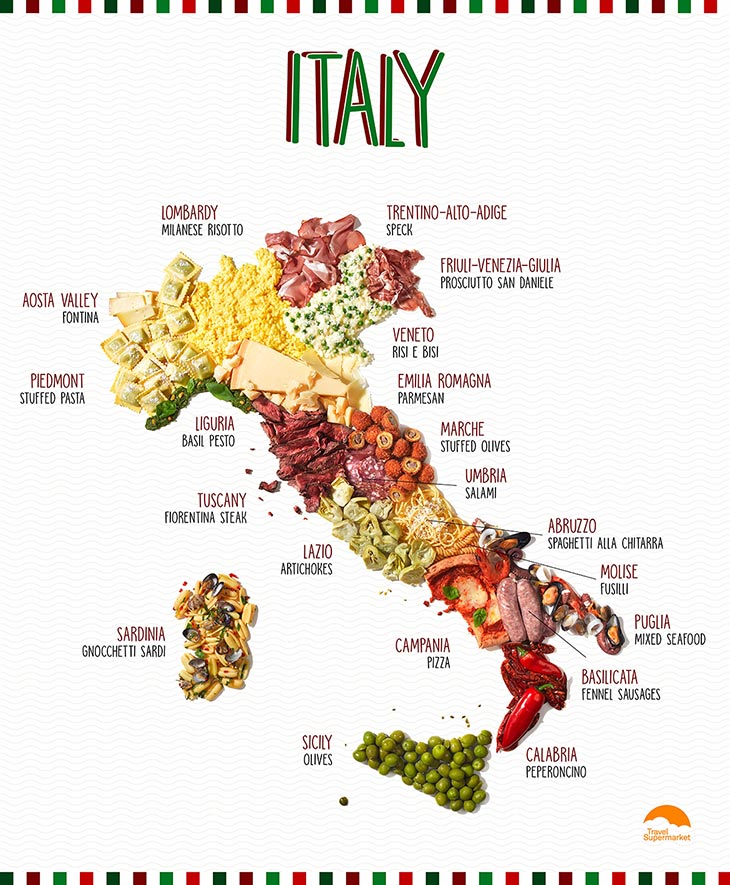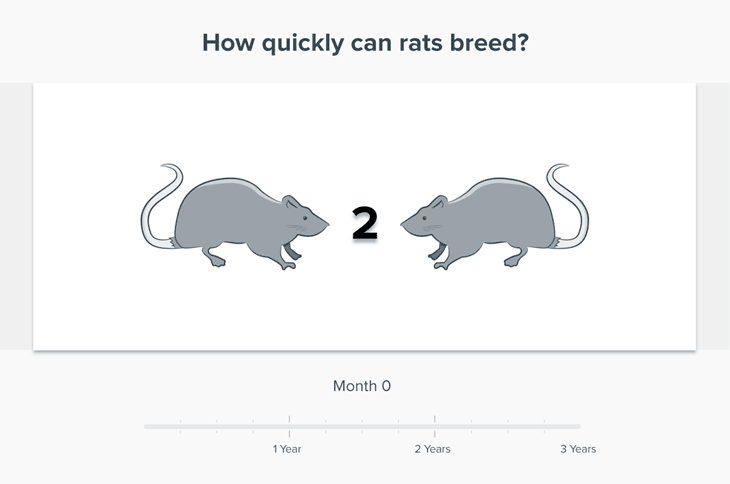SIN 1: ENVY – Copying Other Businesses’ Content Strategies
Your unique perspective is at the heart of the content you make. Originality, combined with a targeted approach, is vital if your brand wants to survive. Taking the time to really think about your company’s point of view, and creating bespoke content to accompany it, should always be at the forefront of your strategy.
Tip: Create a piece of content that stands out and doesn’t follow the rest of the – digital marketing – crowd.

Travel Supermarket’s ‘Food on the Map’ piece is a useful addition to all the other information available online. Rather than producing a simple list or guide displaying the same information, with this piece Travel Supermarket instead created an attractive map with interactive features. In other words, it presents information in a new, fresh and original way that is both informative and easily digestible (pun intended!).
SIN 2: LUST – Over-Focusing on Vanity Metrics
Vanity metrics like page views and number of followers can make you feel good, and can be a useful indicator when it comes to understanding what is appealing to your audience. However, there is also no single set of metrics that works for every company. Although vanity metrics could very well demonstrate what is working for your business, and therefore play a key part in reaching its goals, these metrics don’t directly impact revenue. Therefore, it would be advisable not to ignore other metrics, and additionally include engagement metrics to track how your content is doing. This combination will be a much more effective way to help understand how much of an impact your website has on attracting and retaining potential customers.
Tip: Track repeat pageviews, content shares and conversion rates as a much more fruitful way of reaching your ultimate business goals.
SIN 3: GLUTTONY – Over-Advertising and Overly Branded Content
Content marketing is designed to introduce a brand or company, giving it a voice and helping build relationships with a growing audience. Much like advertising, it can be used to push products, but in a more subtle manner. Sharing content that is too overtly branded could lead to breaking trust and losing your audience’s attention, which we will delve into further down. Instead, focus on making great content and creative thinking to underpin your content marketing strategies.
Tip: The user is your number one priority. Aim to inform and educate, but never lose sight of your brand. Relevancy to both your audience and your brand or product is key.

Rentokil’s ‘Rise of the Rats’ campaign informs and educates its audience through the accessible presentation of complex data relating to rat population statistics. Here, Rentokil pushes its product – pest management solutions – in a very subtle and creative manner. Capturing the audience’s attention by relying on real-life data, while ensuring the content isn’t excessively branded, is hugely effective in helping to build authority.
SIN 4: GREED – Making Your Content All About Money
It’s easy to get wrapped up in making money and increasing revenue, but when it comes to content marketing, the aim of increasing revenue should be subtle to your customers. Position your content in a way that emphasises that your customer is the priority and focus on building and retaining relationships with your audience. This in turn should contribute to growing your brand’s reputation, increasing traffic to your website and, ultimately, driving sales. When the piece of content’s agenda to benefit business revenue is too blatant to your audience, this can be a huge deterrent. Therefore, nurturing a brand-client relationship is vital, and will eventually help encourage profitable customer action.
Tip: Create content that either entertains, educates, convinces or inspires, depending on what stage of the funnel your audiences are at.

Health and life insurer Vitality’s ‘Living with Diabetes’ piece is educative in nature. This is a perfect example of a piece of content that puts its user first, through its reliance on personal case studies and sharing of relevant content. Instead of making it all about money, the aim of this piece is to educate Vitality’s customers by helping them understand what it’s like to live with diabetes and offer genuinely useful advice on living with the condition.
SIN 5: PRIDE – Losing Your Audience’s Attention
It’s easy to forget who we are writing for when we get so caught up focusing on ourselves. Pride, often seen as the root of all sin, can lead us into thinking that a content piece’s importance is self-evident, that it can stand on its own and needs no further explanation.
Tip: Create outstanding, memorable content pieces that are well-researched and written by experts. Ensure every piece of content intended for your website is optimised for all major search engines to give it the attention it deserves.

Fairmont’s ‘Life without Bees’ piece heavily relies on data and statistics from reputable sources, and utilises this data in an original and effective manner. Immediately, when you look at the piece, its purpose is self-explanatory and grabs its audience’s attention.
SIN 6: SLOTH – Inconsistency and Missing the Right Time to Publish Content
Inconsistency is a major content marketing sin, whether you’re a blogger, a small or a large business. Everything from your logo, corporate website, social campaigns, media coverage and even your office culture contributes to your brand. When your online presence and marketing materials are misaligned, it can erode your audience’s trust and can be interpreted as careless and unprofessional. And always remember: timing is crucial. You only have a few seconds to capture someone’s attention in the noise that we call the world wide web.
Tip: Make your content consistent by sticking to an editorial calendar. Factor in some time to be flexible in case there is an opportunity to newsjack a story or share something seasonal or time-dependent

Social enterprise Better’s campaign was launched in support of its Dog Read 2017 event in public libraries during Social Enterprise Week in October 2017. Due to the campaign’s aim, it was crucial the piece launched on a tight schedule; this was achieved by setting a strict timeline with specific deadlines alongside plenty of preparatory work.
SIN 7: WRATH – Insensitive and Negative Content Sharing
Emotional engagement is a fundamental component in every successful content marketing campaign. Content that provokes a strong emotional reaction tends to perform well, especially when it comes to visual content. So yes, it’s totally OK if people shed a tear, or even feel slightly confused or scared, when engaging with your content. However, always aim to tap into your audience’s emotions through the sensitive and considered delivery and positioning of your content.
Tip: Never create content with wrath in your heart, avoid negativity where you can and put a positive, but honest spin on sensitive topics.

Staysure’s ‘Travelling with a Mental Illness’ campaign is a unique example of a piece of content that evokes a strong emotional reaction in its audience. Using powerful storytelling and considered illustrations, Staysure shone a light on a sensitive subject.
Final Thoughts
While we are all guilty of overlooking some of these sins in the past, and this list is by no means extensive, we have an obligation to our audiences and ourselves to provide high-quality, interesting and educative content. If you find any of the sins relevant to your own business, then it may be time to bite the bullet and make the necessary changes.
